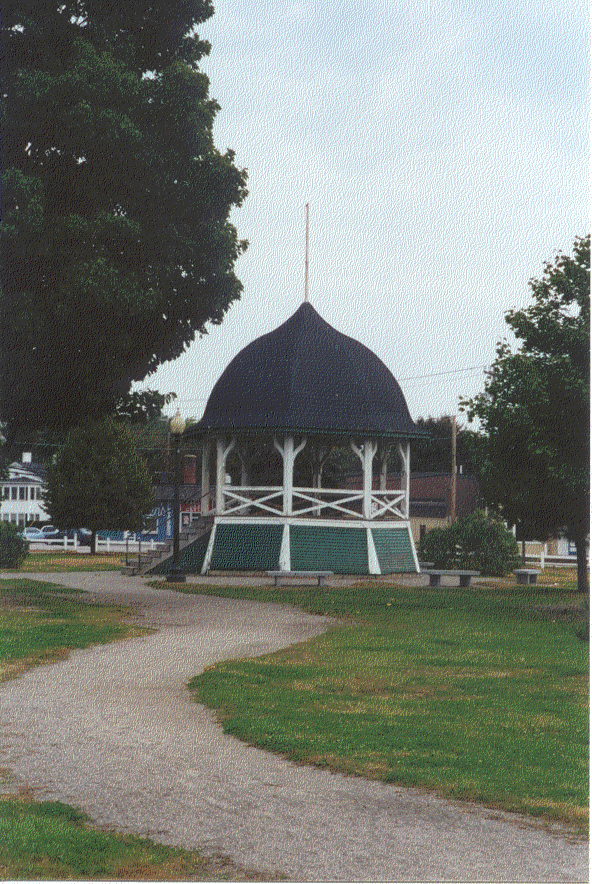|
The Rochester Common is only a fraction of the land that was originally the Rochester Common. In 1730 the Rochester Common encompassed
more than 250 acres and the Common extended into what is now downtown Rochester. The original name was the Norway Plain Mille Common, the Common was named after
the beautiful Norway Pines which grew in abundance in the Northern part of the Common. By 1780 the area surronding the Common was the most thickly settled part of town so a meeting house/church was erected
on the Common. The new meeting house was located on the east end of the Common with the entrance facing what is now South Main Street. A cemetary was also
established near the new meeting house but the ground was found to be too wet and the bodies were removed to the Old Rochester Cemetary. In 1842 the Meeting House/church was also moved to the present day location
of the corner of Liberty and South Main Streets. As the years went by the size of the Commom would shrink as more of it was sold off for development.
During the Revolutionary War the Common was used as meeting place for soldiers before going off to war. The common is also the locaton of the city's Civil War monument which bears the names of the 54 men who died in the Civil War. The monument was dedicated in the 1870's and in the 1880's the statue was added to the monument. Four Civil War cannon also decorated the monument but during World War II the cannon were melted down for use in the war. They were replaced by World War II guns. The bandstand was built in 1914 by Miles Dustin, before then band concerts were held in on the square. The flag pole was donated by J. Frank Place in 1917. He was the former publisher of the Rochester Courier.
 |